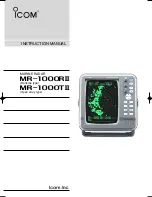
LD2103 V3.0 Page 8 of 33
SRT Marine
Instruction Manual
SRT-MTB
©
Class B Marine AIS
Introduction
How AIS Works
The marine Automatic Identification System (AIS) is a location and vessel information reporting system. It allows vessels
equipped with AIS to automatically and dynamically share and regularly update their position, speed, course and other
information such as vessel identity with similarly equipped craft. Position is derived from a Global Navigation Satellite System
(GNSS) network and communication between vessels is by Very High Frequency (VHF) digital transmissions. A sophisticated
and automatic method of time sharing the radio channel is used to ensure that even where a large number of vessels are in one
location blocking of individual transmissions is minimised, any degradation of the expected position reporting interval is
indicated to the user and even if the unit suffers extreme channel overload conditions it will always recover to normal operation.
AIS Classes
There are two classes of AIS unit fitted to vessels, Class A and Class B. In addition AIS base stations may be employed by the
Coastguard, port authorities and other authorised bodies. AIS units acting as aids to navigation (A to Ns) can also be fitted to
fixed and floating navigation markers such as channel markers and buoys.
Class A units are a mandatory fit under the safety of life at sea (SOLAS) convention to vessels above 300 gross tons or which
carry more than 11 passengers in International waters. Many other commercial vessels and some leisure craft also fit Class A
units.
Class B units are currently not a mandatory fit but authorities in several parts of the world are considering this. Class B units are
designed for fitting in vessels which do not fall into the mandatory Class A fit category.
The TRANSAS AIS CLASS B - is a Class B unit
Position Information Source
As noted above the marine AIS system uses position information derived from networks such as the Global Positioning Satellite
(GPS) or the Global Navigation Satellite System (GLONASS) in order to determine the location of the AIS unit and thus the
vessel to which it is fitted.
The TRANSAS AIS CLASS B- utilises the GPS satellite network.









































